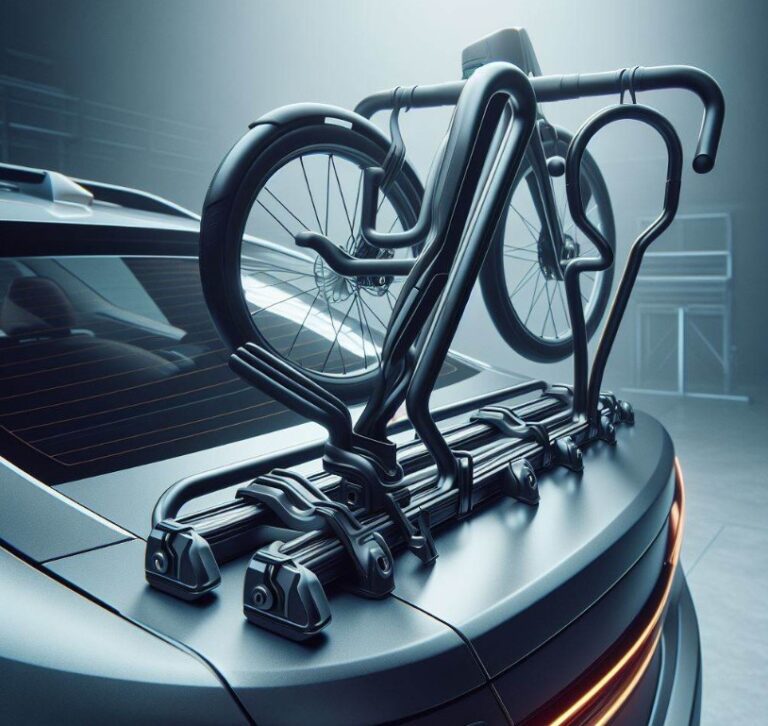Can You Leave An Electric Bike Outside? Answered
To discuss the topic “Can You Leave An Electric Bike Outside?” it’s essential to consider various factors that could impact the decision to store an electric bike (e-bike) outdoors. These factors include the e-bike’s exposure to weather elements, security concerns, and the potential for damage to the bike’s electrical components.
This article aims to provide a comprehensive overview, addressing these concerns, offering advice, and presenting solutions to ensure your e-bike remains safe and operational even when parked outside.
Key Takeaways
- Leaving an e-bike outside can expose it to weather-related damage and increase the risk of theft.
- Protective measures, such as using weatherproof covers and secure locks, can mitigate some risks.
- Long-term exposure to extreme temperatures and moisture can harm the battery and electrical components.
Can You Leave An Electric Bike Outside?
The answer is yes but with caution. While it’s possible to leave an electric bike outside, doing so exposes it to several risks that could affect its longevity and performance. Factors like weather conditions, security, and the specific design and build quality of your e-bike play significant roles in determining how well it can withstand being left outdoors.

Weather Considerations
Exposure to Rain and Moisture: Leaving an electric bike exposed to rain and moisture can lead to rust on its metal parts and potential damage to its electrical systems. Although many e-bikes are designed with some degree of water resistance, prolonged exposure can still be detrimental.
Impact of Sunlight and Heat: Constant exposure to direct sunlight can fade the bike’s paint and can also affect the battery’s health. High temperatures can lead to battery degradation, reducing its capacity and lifespan.
Cold Weather Effects: Cold weather can negatively impact battery performance, leading to reduced range and efficiency. Extremely low temperatures can also cause permanent damage to the battery cells.
Security Concerns
When leaving an e-bike outside, security becomes a significant concern. E-bikes, being more valuable than traditional bikes, are attractive targets for thieves. The use of high-quality locks and secure parking locations can help mitigate this risk.
Protective Measures
Using Bike Covers: A high-quality, waterproof bike cover can protect your e-bike from rain, snow, and sun. Ensure the cover is designed for e-bikes to allow for adequate ventilation and prevent moisture buildup.
Secure Locking Methods: Investing in robust locks (U-locks, chain locks, or folding locks) and locking both the frame and wheels to an immovable object can deter theft. Additionally, consider using a GPS tracker for added security.
Long-term Storage Solutions
For those who need to leave their e-bike outside regularly, exploring more secure and protected storage solutions is advisable. Bike sheds, lockers, or secure bike parking facilities offer better protection from both theft and the elements.
Impact on Battery and Electrical Components
The battery is one of the most critical components of an e-bike, and its care should be a top priority. Exposure to extreme temperatures, whether hot or cold, can significantly impact its performance and lifespan. Keeping the battery charged and storing it in a dry, temperature-controlled environment when not in use can help maintain its health.
Tips for Outdoor E-Bike Storage
- Use a high-quality, waterproof cover to protect against weather elements.
- Lock your e-bike securely, attaching both the frame and wheels to a fixed object.
- Consider removing the battery and storing it indoors in extreme temperatures.
- Regularly inspect and maintain your e-bike to identify any weather-related damage early.
Can Electric Bikes Be Stored Outside?
Storing electric bikes outside is technically possible, but it’s not recommended due to the potential for weather-related damage, theft, and degradation of the bike’s components.
Electric bikes contain sensitive electronic components, including the motor and battery, that are susceptible to moisture, extreme temperatures, and direct sunlight.

Prolonged exposure to these elements can lead to rust, corrosion, and reduced battery performance. While many e-bikes are designed to be water-resistant, this does not equate to being waterproof, and significant exposure can still result in damage.
It’s important to consider the manufacturer’s guidelines regarding storage and exposure to elements. Most manufacturers advise against storing bikes outside for extended periods to prevent damage and extend the lifespan of the bike.
For those who have no alternative but to store their e-bike outside, taking protective measures such as using a high-quality, waterproof bike cover and ensuring the bike is securely locked can help minimize the risks. However, indoor storage in a dry, temperature-controlled environment is always the best option to maintain the condition and longevity of your electric bike.
How Do You Store An E-Bike Outside?
If storing an electric bike outside is unavoidable, there are several measures you can take to protect it:
- Use a High-Quality Bike Cover: Invest in a durable, waterproof, and breathable bike cover. This will protect your e-bike from rain, snow, and UV damage. Ensure the cover fits snugly around your bike and is secured to prevent it from being blown away by the wind.
- Secure the Bike: Use robust locks to secure your e-bike to an immovable object. A combination of a U-lock and a chain lock is often recommended to secure both the frame and the wheels, providing added deterrence against theft.
- Remove the Battery: If possible, remove the battery and store it indoors. This not only protects the battery from extreme temperatures but also reduces the risk of theft. Storing the battery in a cool, dry place can help preserve its longevity.
- Elevate the Bike: Keeping the bike off the ground can prevent damage from standing water and reduce the risk of rusting on the lower components. Use a bike rack or a wall mount if possible.
- Regular Maintenance Checks: Regularly inspect your bike for signs of rust, wear, or damage, especially if it’s stored outside. This includes checking electrical connections, lubricating moving parts, and ensuring the battery is charged according to the manufacturer’s guidelines.
By following these steps, you can minimize the risks associated with outdoor storage, though indoor storage remains the preferred option for the long-term care of your e-bike.
Can Electric Bikes Be Left In The Rain?
Electric bikes are designed to withstand light rain and splashes, thanks to their water-resistant components. However, this does not mean they are fully waterproof, and leaving an e-bike exposed to heavy rain or standing water can lead to potential damage.
Water can seep into the electrical system, causing short circuits and corrosion, and prolonged moisture exposure can damage the battery, motor, and display components.

If you’re caught in the rain, it’s advisable to dry your bike as soon as possible afterward, paying special attention to the electrical components, connections, and battery. Avoid using high-pressure water jets for cleaning, as this can force water into sensitive areas.
For those who live in areas prone to frequent rain, investing in a waterproof bike cover for times when the bike must be parked outside is a wise precaution. Additionally, consider applying water-repellent lubricants to the chain and mechanical parts to protect against rust and corrosion.
Can I Leave My EBike Outside Without The Battery?
Removing the battery when storing an e-bike outside can offer several benefits, including protecting the battery from extreme temperatures and potential theft.
The battery is one of the most valuable and sensitive components of an electric bike, and exposure to very high or low temperatures can negatively impact its performance and lifespan.
When removing the battery, it’s crucial to store it in a cool, dry place away from direct sunlight and extreme temperatures. This helps maintain the battery’s optimal performance and extends its lifespan. It’s also advisable to keep the battery partially charged, typically between 40% and 80%, if it will not be used for an extended period.
Leaving the e-bike frame outside without the battery reduces the risk of damage to the battery itself but does not eliminate the risks to the bike from weather exposure or theft. Therefore, even without the battery, it’s still important to use a protective cover and secure the bike properly.
Conclusion
Leaving an electric bike outside poses several risks, from weather-related damage to increased chances of theft. While it’s possible to mitigate these risks with protective measures such as using weatherproof covers and secure locks, the ideal solution is to store your e-bike in a secure, indoor location whenever possible.
If outdoor storage is your only option, taking the necessary precautions to protect the battery, electrical components, and the bike itself can help extend the lifespan and maintain the performance of your electric bike. Remember, the care and attention you give to storing your e-bike can significantly impact its longevity and reliability.
Top FAQ’s
What should I do if my electric bike gets wet?
If your e-bike gets wet, dry it off as soon as possible with a clean cloth. Pay special attention to the electrical components, battery contacts, and any moving parts like the chain and gears. If the bike was exposed to heavy rain or submerged, it’s advisable to have it checked by a professional to ensure the electrical system has not been compromised.
How can I protect my electric bike from theft when parked outside?
To protect your e-bike from theft, use high-quality locks, secure the bike to an immovable object, and park in well-lit, high-traffic areas. Additionally, consider using a GPS tracker and registering your bike with local and national bike registries to deter thieves and aid in recovery if stolen.
Is it necessary to remove the battery when leaving an electric bike outside?
Removing the battery can help protect it from extreme temperatures and potential theft. If you plan to leave your e-bike outside for an extended period, especially in very hot or cold weather, it’s advisable to remove the battery and store it in a dry, temperature-controlled environment.
It’s good practice to inspect your e-bike regularly, ideally after each exposure to harsh weather conditions. Look for signs of rust, corrosion, tire damage, and any electrical issues. Regular maintenance checks can help catch and address any problems early, extending the lifespan of your e-bike.

Welcome to the exhilarating world of Matt Rex, a professional car racer turned renowned vehicle enthusiast. Immerse yourself in his captivating blog as he shares heart-pounding adventures, expert reviews, and valuable insights on cars, trucks, jets, and more. Fuel your passion for speed and discover the beauty of vehicles through Matt’s engaging stories and meticulous expertise. Join the ever-growing community of enthusiasts who find inspiration and expert advice in Matt Rex’s blog—a digital hub where the thrill of speed meets the pursuit of knowledge.





![Can You Get A Speeding Ticket On A Bike? [Answered]](https://www.turbochaos.com/wp-content/uploads/2024/02/Can-You-Get-A-Speeding-Ticket-On-A-Bike-768x469.jpg)
